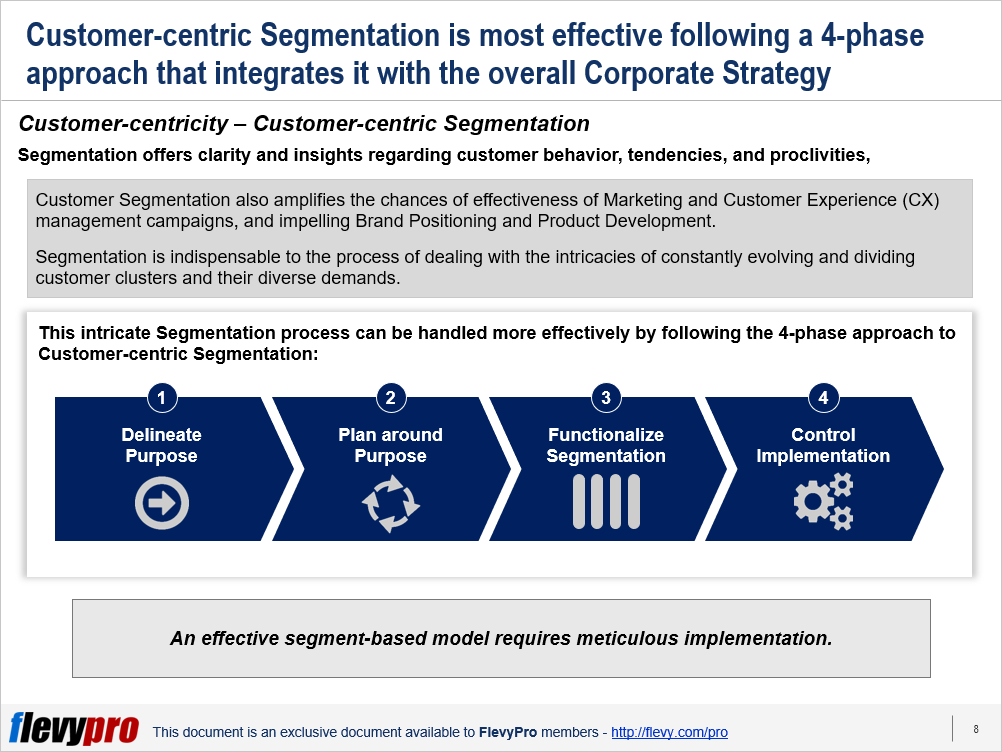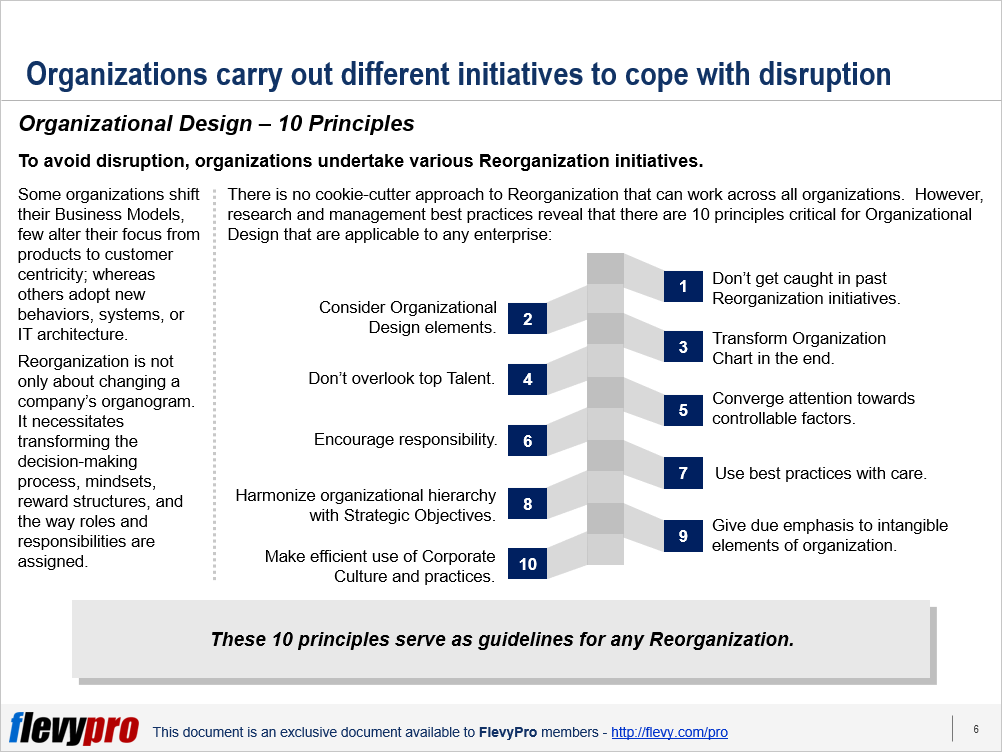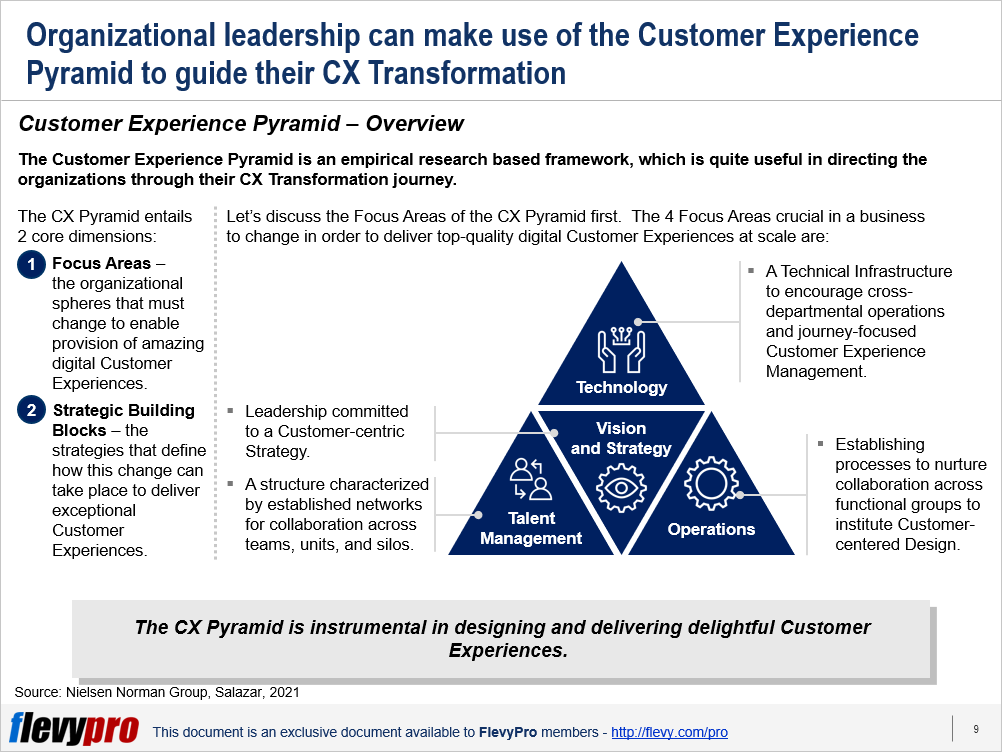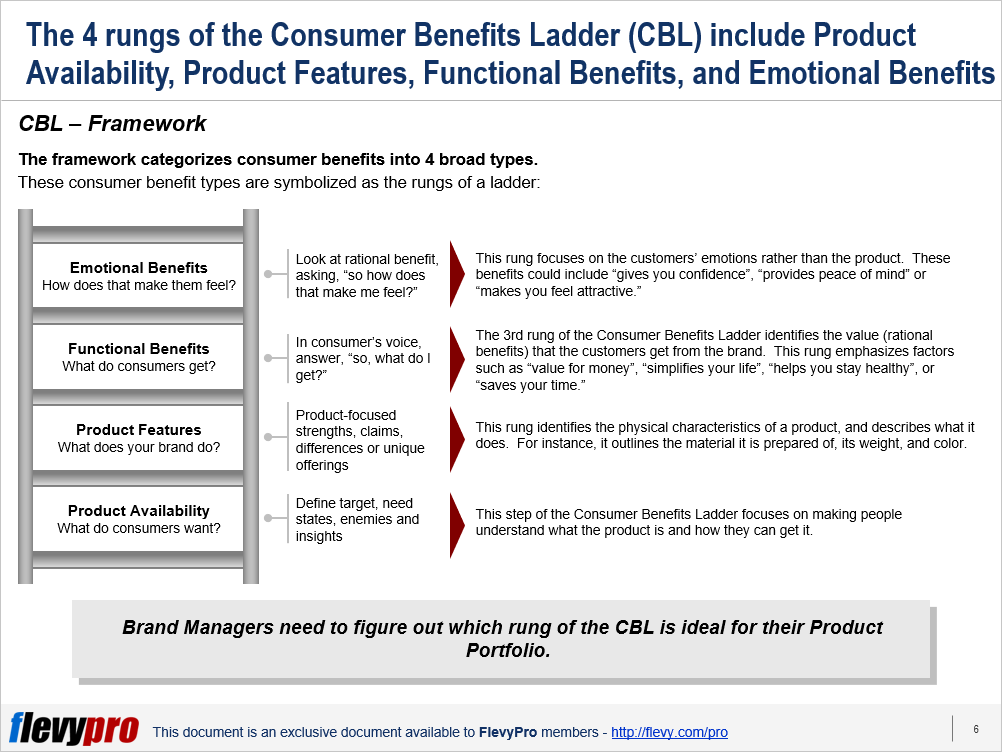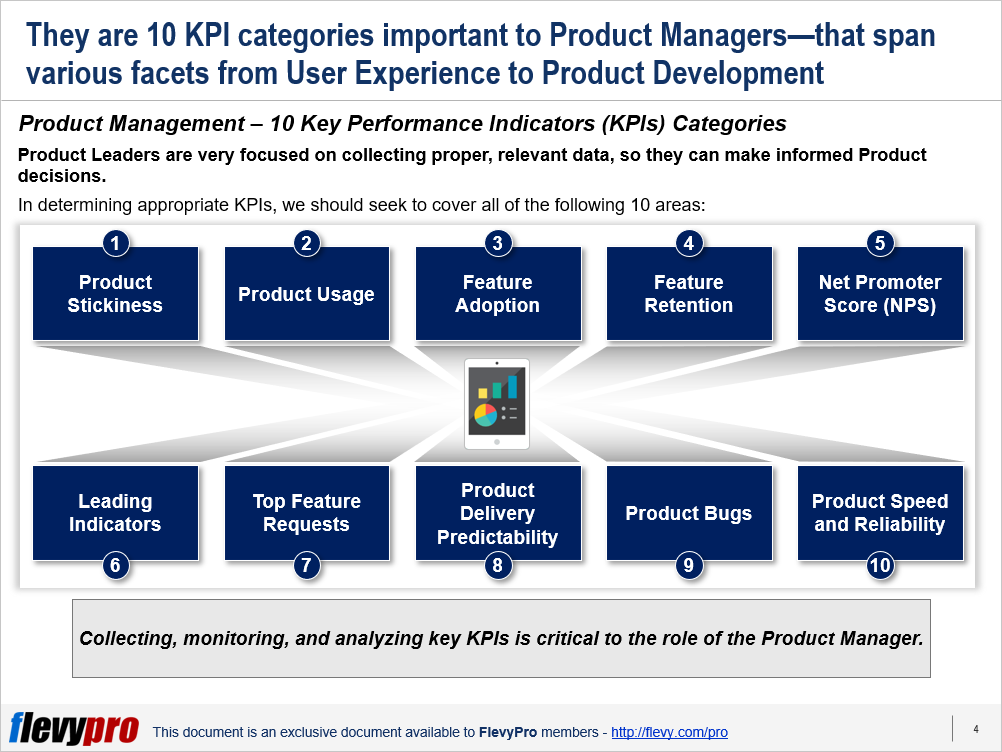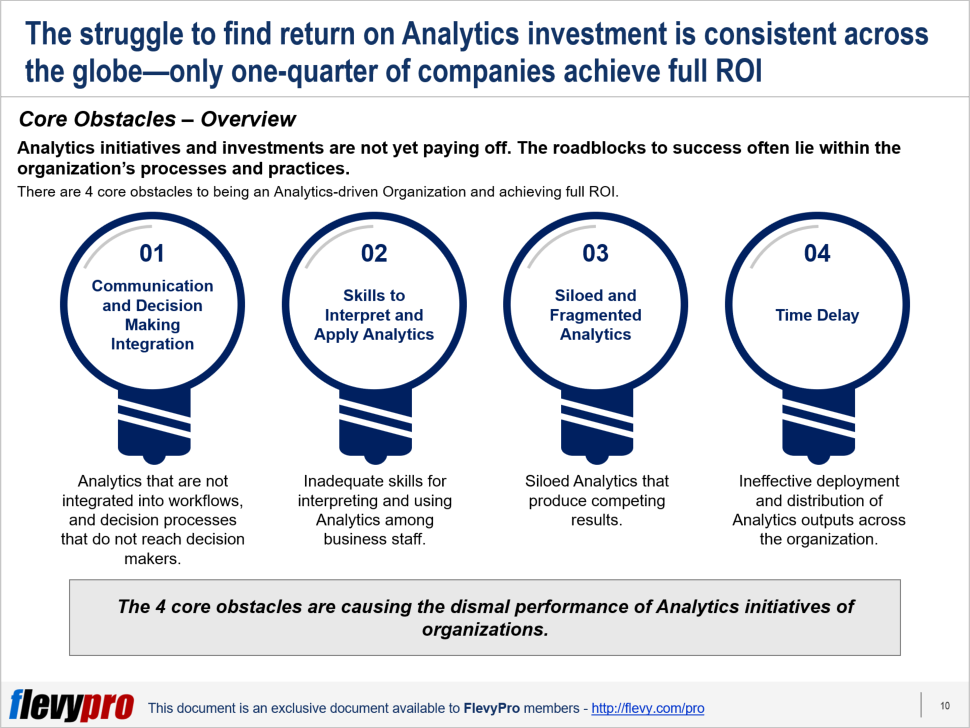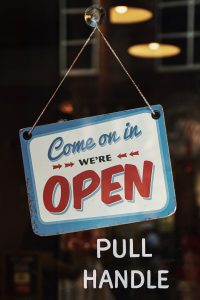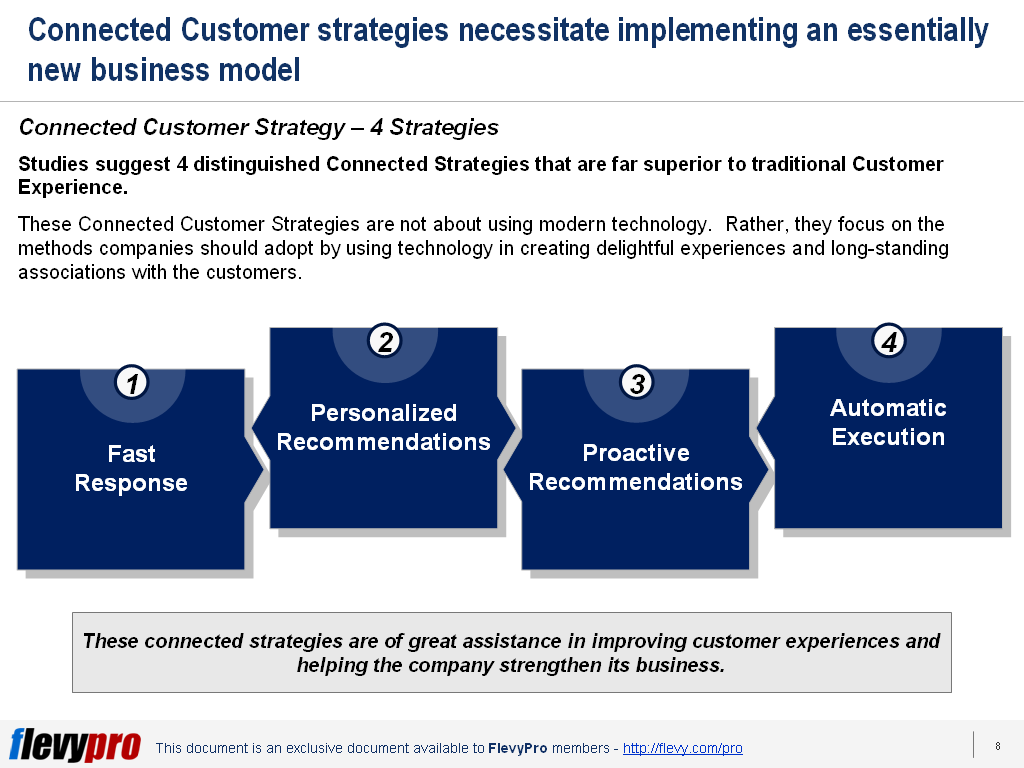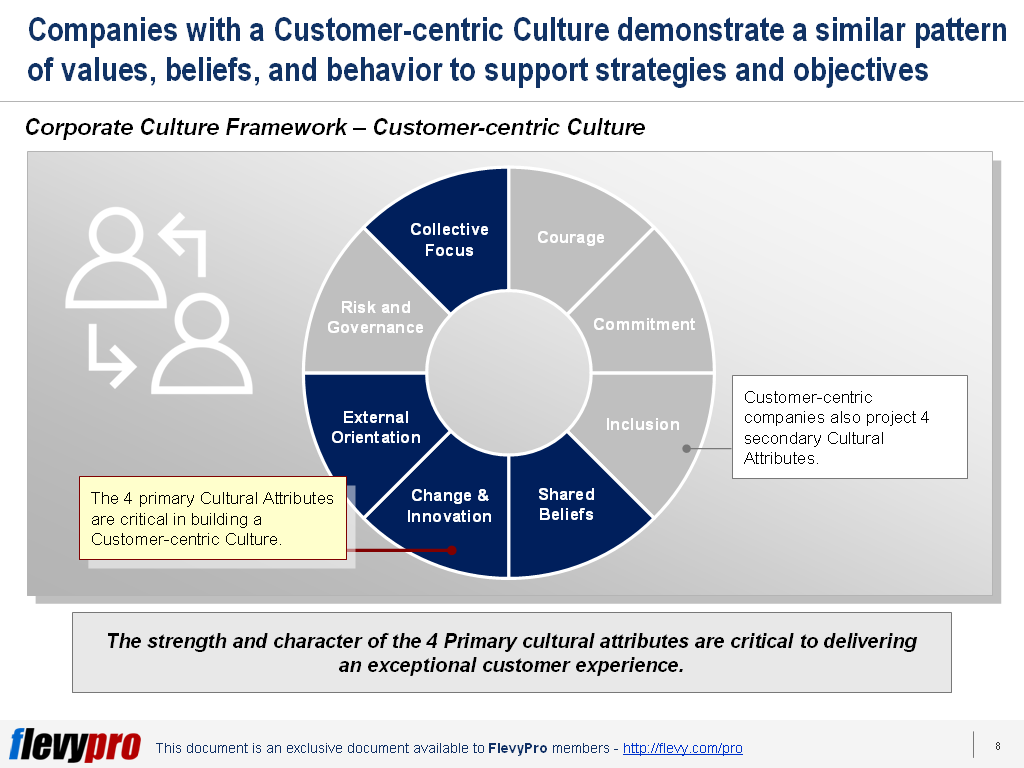4-Phase Customer-centric Segmentation
11 Jan

Editor’s Note: If you are interested in becoming an expert on Strategy Development, take a look at Flevy’s Strategy Development Frameworks offering here. This is a curated collection of best practice frameworks based on the thought leadership of leading consulting firms, academics, and recognized subject matter experts. By learning and applying these concepts, you can stay ahead of the curve. Full details here.
* * * *
Rising competition and introduction of new ways of capturing large amounts of customer data has necessitated advancement in capabilities of organizations to foresee and fulfill customer needs and wants.
Ever more B2C concerns are going all-out to Design Customer-centric organizations. Organizations pursuing Customer-centricity depend on some type of Market Segmentation. Market Segmentations assist in understanding the customer more intimately.
This understanding has to be based on solid data. Even though the collection of customer data is at its highest of all time, organizations are still finding it difficult to apply the insights being offered by Customer Segmentation to propel Change and enhance Performance. This is the Customer Data Paradox. With more customer data, it has ironically become more difficult to derive useful insights from the data.
Data-driven enterprises are sensing that their Segmentation endeavors have been unable to provide anything near the extent of benefit they should. Cause for such failure is development of Segmentations founded on contradictory Business Purpose; purposes that are not widely comprehended or communicated or cannot be immediately acted upon.
Segmentation is indispensable to the process of dealing with the intricacies of constantly evolving and dividing customer clusters and their diverse demands. Need for developing a company-wide Operating Model that is able to transform this extensive data into valuable information so as to enable improved Go-to-Market decisions is essential.
This intricate Segmentation process can be handled more effectively by following the 4-phase approach to Customer-centric Segmentation:
- Delineate Purpose
- Plan around Purpose
- Functionalize Segmentation
- Control Implementation
Segmentation offers clarity and insights regarding customer behavior, tendencies, and proclivities.
Customer Segmentation also amplifies the chances of effectiveness of Marketing and Customer Experience management campaigns, and impelling Brand Positioning and Product Development.
Let us look at the 4 phases in detail.
Delineate Purpose
Clearly defining and understanding the Purpose of Segmentation is necessary to set the base for the type of Segmentation effort that is required to be undertaken—i.e., Strategic or Tactical or both.
Strategic Segmentation is applied for all-embracing, enterprise-wide purposes. Tactical Segmentation is adopted for a far more precise purpose.
Goal is to guarantee that Segmentation results in distinct processes and actions that augment Performance.
Plan around Purpose
Segmentation research needs to be meticulously planned to manifest the Purpose decided, and to make certain that the outcomes are insightful, practicable, and discernable.
Segmentation research has to encompass several dimensions such as behaviors, outlooks, demographics, channel use, inclinations, and profitability.
Functionalize Segmentation
This phase involves determining changes that will take place in the decision processes and communicating them to the concerned business partners so as to deliberate on and devise adjusted metrics that reflect the new capabilities.
Control Implementation
Means for administering change—directed and customized communications arranged to stimulate understanding, interaction, and approval—are required to be utilized completely.
Interested in learning more about Customer-centric Segmentation? You can download an editable PowerPoint on Customer-centric Segmentation here on the Flevy documents marketplace.
Want to Achieve Excellence in Strategy Development?
Gain the knowledge and develop the expertise to become an expert in Strategy Development. Our frameworks are based on the thought leadership of leading consulting firms, academics, and recognized subject matter experts. Click here for full details.
“Strategy without Tactics is the slowest route to victory. Tactics without Strategy is the noise before defeat.” – Sun Tzu
For effective Strategy Development and Strategic Planning, we must master both Strategy and Tactics. Our frameworks cover all phases of Strategy, from Strategy Design and Formulation to Strategy Deployment and Execution; as well as all levels of Strategy, from Corporate Strategy to Business Strategy to “Tactical” Strategy. Many of these methodologies are authored by global strategy consulting firms and have been successfully implemented at their Fortune 100 client organizations.
These frameworks include Porter’s Five Forces, BCG Growth-Share Matrix, Greiner’s Growth Model, Capabilities-driven Strategy (CDS), Business Model Innovation (BMI), Value Chain Analysis (VCA), Endgame Niche Strategies, Value Patterns, Integrated Strategy Model for Value Creation, Scenario Planning, to name a few.
Learn about our Strategy Development Best Practice Frameworks here.
Do You Find Value in This Framework?
You can download in-depth presentations on this and hundreds of similar business frameworks from the FlevyPro Library. FlevyPro is trusted and utilized by 1000s of management consultants and corporate executives. Here’s what some have to say:
“My FlevyPro subscription provides me with the most popular frameworks and decks in demand in today’s market. They not only augment my existing consulting and coaching offerings and delivery, but also keep me abreast of the latest trends, inspire new products and service offerings for my practice, and educate me in a fraction of the time and money of other solutions. I strongly recommend FlevyPro to any consultant serious about success.”
– Bill Branson, Founder at Strategic Business Architects
“As a niche strategic consulting firm, Flevy and FlevyPro frameworks and documents are an on-going reference to help us structure our findings and recommendations to our clients as well as improve their clarity, strength, and visual power. For us, it is an invaluable resource to increase our impact and value.”
– David Coloma, Consulting Area Manager at Cynertia Consulting
“FlevyPro has been a brilliant resource for me, as an independent growth consultant, to access a vast knowledge bank of presentations to support my work with clients. In terms of RoI, the value I received from the very first presentation I downloaded paid for my subscription many times over! The quality of the decks available allows me to punch way above my weight – it’s like having the resources of a Big 4 consultancy at your fingertips at a microscopic fraction of the overhead.”
– Roderick Cameron, Founding Partner at SGFE Ltd













